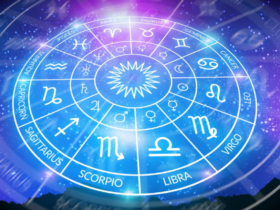Tarot cards, often associated with divination and mysticism, can be a powerful tool for self-reflection and personal growth. Unlike their common portrayal as fortune-telling instruments, tarot cards can serve as mirrors to our inner selves, helping us explore our thoughts, emotions, and motivations.
Understanding Tarot
A standard tarot deck consists of 78 cards, divided into the Major Arcana and Minor Arcana. The Major Arcana includes 22 cards that represent significant life themes and lessons, such as The Fool, The Empress, and The World. The Minor Arcana consists of 56 cards that delve into everyday situations and emotions, divided into four suits: Cups, Pentacles, Swords, and Wands.
How Tarot Aids Self-Reflection
Prompting Introspection: Each tarot card carries symbolic imagery and themes that can prompt deep introspection. For example, drawing The Hermit card might encourage you to consider areas of your life where solitude and self-discovery are needed.
Identifying Patterns: Tarot readings can help identify recurring patterns in your thoughts and behaviors. By recognizing these patterns, you can work towards breaking negative cycles and fostering positive habits.
Exploring Emotions: Tarot provides a safe space to explore and articulate complex emotions. Cards like the Ten of Cups can highlight areas of emotional fulfillment, while the Five of Swords can bring attention to conflicts and stress.
Related: Tarot in Film and Pop Culture: The Aesthetic of the Cards
Encouraging Mindfulness: Regularly drawing and contemplating tarot cards can cultivate mindfulness. This practice encourages you to live in the present moment and be more aware of your inner landscape.

Practical Steps to Use Tarot for Self-Reflection
Set an Intention: Before drawing cards, set a clear intention or question. This helps focus your mind and provides direction for your reading.
Draw Cards Regularly: Make tarot a regular practice, such as a daily or weekly draw. This consistency helps build a deeper connection with the cards and their meanings.
Journal Your Insights: Keep a tarot journal to record your readings and insights. Over time, this can reveal patterns and progress in your self-reflection journey.
Reflect and Apply: Take time to reflect on the messages and insights from your readings. Consider how they apply to your current life situation and what actions you can take based on this understanding.
Related: Zodiac Alignment for the New Year: What to Focus on First
Using tarot cards for self-reflection is not about predicting the future but about understanding yourself better. Through regular practice, tarot can become a valuable tool for personal growth, helping you navigate life with greater self-awareness and clarity.





















